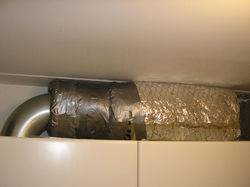Anyone use one or used one?Just wondering as to how effective they really are becuase the ads say they will reduce perceived noise by up to 15-25dba (dba = decibels) and that each time you lower the volume by 3 dba it's like halfing the listners hearing.
So I f anyone is using a duct muffler or has used one before,please help.
I have details on how to build one,much like a popular carbon scrubber and ust wondering if it's worth spending the money to make one so I can have unimpeded/total cfm rather then get a solid state speed controller and slow the fan down as well as cutting the airflow down.
So I f anyone is using a duct muffler or has used one before,please help.
I have details on how to build one,much like a popular carbon scrubber and ust wondering if it's worth spending the money to make one so I can have unimpeded/total cfm rather then get a solid state speed controller and slow the fan down as well as cutting the airflow down.

 , but could easily be DIY'd for about $25 - $30.
, but could easily be DIY'd for about $25 - $30.
 ) measusred up the specs on the muffler and copied it.
) measusred up the specs on the muffler and copied it.





